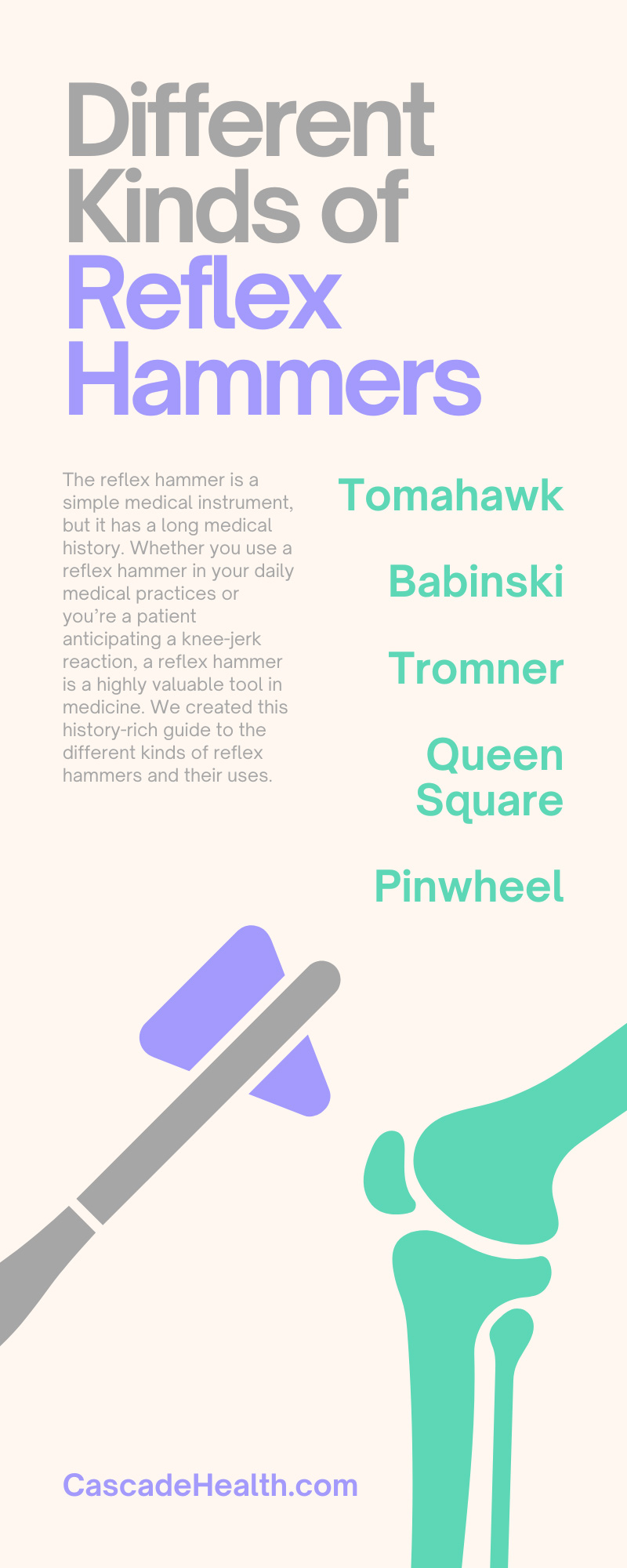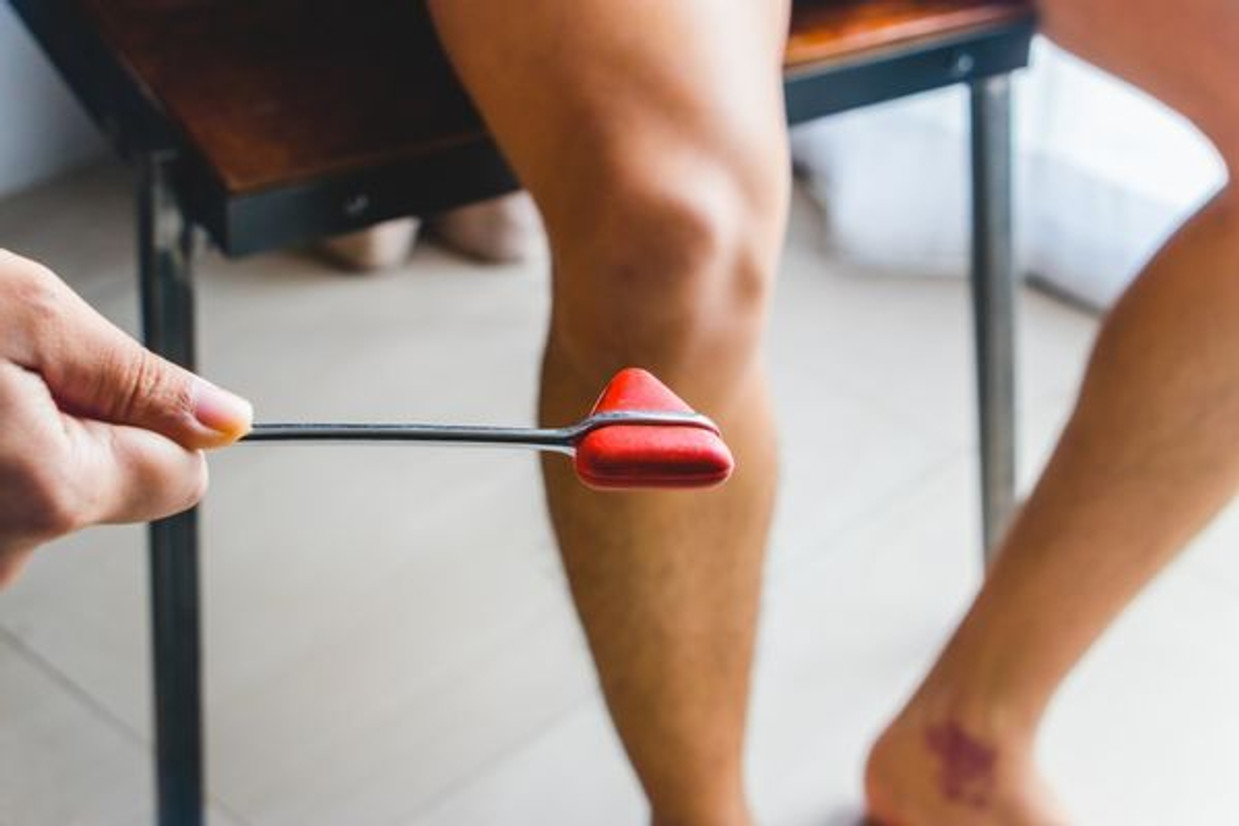A Guide to the Different Kinds of Reflex Hammers
The reflex hammer is a simple medical instrument, but it has a long medical history. Whether you use a reflex hammer in your daily medical practices or you’re a patient anticipating a knee-jerk reaction, a reflex hammer is a highly valuable tool in medicine. We created this history-rich guide to the different kinds of reflex hammers and their uses.
The Reflex Hammer: How It Started
It all started when two physicians, Karl Friedrich Otto Westphal and Wilhelm Heinrich Erb, combined their expertise about tendons and discovered the value of tendon reflexology. In 1875, these shared concepts brought them closer to the idea that a simple strike of the tendon could activate it, triggering a reflex. Erb’s work didn’t stop there—he went on to suggest that a percussion hammer could be the tool that physicians use to perform the strike and activate the reflex.
At this time, percussion hammers weren’t new, nor were they misunderstood. Back in 1761, the percussion hammer hit the scene as a chest-tapping device to invoke chest thoracic percussions. Leopold Auenbrugger received inspiration after watching his father test the level of wine inside barrels through a distinct tapping technique. After witnessing this a few times, he realized how valuable this tapping method could be when evaluating the texture or density of the chest’s organs. With this method catching on, other physicians began exploring the versatility of the percussion hammer and how it could benefit other medical practices.
John Madison Taylor decided the chest percussion hammer was excellent for its intent but not feasible for other tendon reflexology purposes. In 1888, he turned this aged hammer and the touch of a tendon into the ever-popular Taylor reflex hammer. Today, the reflex hammer remains an integral component of a medical professional’s kit. And although the medical world evolves rapidly, the reflex hammer and all its variations show no signs of necessary change.
Common Types of Reflex Hammers
After a long history of availability and use, multiple reflex hammers hit the market for physicians to refine their medical practices. Regardless of style, they almost all perform similarly, but each has a unique trait, purpose, and namesake. Below we discuss the different kinds of reflex hammers and how each offers value to all medical professionals.
Tomahawk
The Tomahawk, also known as the infamous Taylor reflex hammer, received its unique nickname because the shape of the hammer’s head resembles a tomahawk. The Taylor reflex hammer is one of the most commonly used and known hammers in the US. It features a flat metal handle with a triangle rubber hammer head. Many medical professionals keep a Taylor reflex hammer on hand because of its sleek design and robust functionality.
Babinski
The Babinski reflex hammer received its name from Joseph Babinski, a French neurologist who appreciated easy storage for his medical tools and instruments. The metal handle on a Babinski reflex hammer can retract like a telescope and slide into a coat pocket seamlessly. The hammer’s head is round in shape. The Babinski reflex test is a foot reflex response test wherein a provider will strike the sole and monitor the toe’s responsivity. The big toe often makes the largest reflex response, and the little toes should shift in tandem.
Tromner
The Tromner reflex hammer looks similar to a Taylor and Buck reflex hammer, with a metal handle and a rubber hammer head. The difference with the Tromner is its design details, where the handle is round instead of flat, and the mallet head is dual-ended. The dual-ended mallet head features a larger side for tendon stretch reflex tests and a smaller side for percussion myotonia tests.
Queen Square
Unlike other hammers on this list with distinct and creative physician inventors, the Queen Square reflex hammer received its name from the founding hospital in Queen Square, London—the National Hospital for Nervous Diseases. This reflex hammer displays a rounded head with a metal center and plastic edging and a plastic handle that comes to a point. The pointed end serves physicians best when performing a plantar reflex test on a patient’s foot.
Pinwheel
Though not a hammer or mallet in design, the pinwheel also serves a functional reflex purpose. A pinwheel reflex instrument, which sports a pinwheel shape, features a metal handle and a rounded, pointy rolling wheel at the head. This instrument helps physicians perform skin reflexology as the delicacy of the skin requires a different touch than a typical reflex hammer can induce. A physician will roll the head over the abdominal area and wait for a reaction. They must apply light pressure—otherwise, the patient may experience a reaction from the points on the wheel.
Proper Use of a Reflex Hammer
Now that we know the many variations and some basic medical uses, let’s discuss the proper use of a reflex hammer. There aren’t many steps involved, even though multiple designs, materials, and functions exist. It’s worth noting that it’s not uncommon for a provider to carry multiple forms of reflex hammers. A variety ensures the physician can offer a wide range of tests in order to provide the most comprehensive care for patients.
A medical provider will start by placing a firm grip on the chosen hammer’s handle. The patient undergoing a test should be in a neutrally seated position where the target muscle group and tendons are not contracting or stretching. A neutral state is essential to create the most appropriate reflex response. The provider will strike the necessary tendon and examine the muscle’s response or reflex.
The targeted tendon and muscle group will emit a different reaction based on anatomical location. The provider will use their best discretion to determine which tests and hammers are appropriate for the patient.
Choosing a Reflex Hammer With Cascade
Cascade Health Care respects the creation and integrity of each unique medical reflex hammer. We offer all our professionals a diverse range of hammers to equip their kits and facilities with the appropriate instruments to perform their medical practices with integrity, ethics, and safety. Browse our collection of reflex hammers today or connect with our team to learn more.

Recent Posts
-
Exploring Recent Innovations in Doppler Signal Processing
Doppler technology has become an essential diagnostic tool in modern medicine, enabling healthcare p
-
Exploring Recent Innovations in Doppler Signal Processing
Doppler technology has become an essential diagnostic tool in modern medicine, enabling healthcare p


